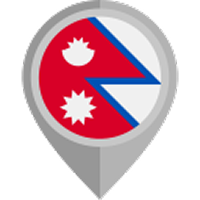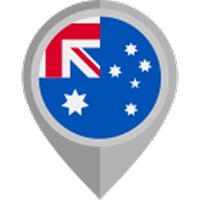Nepal vision | 01/12/2024
Trekking is among the favorite ways to unwind the stress in the lap of nature as you walk through the natural wonders alongside the cheering smile of the mountains and its appealing charm.
Trekking in Nepal is a different experience as you get to immerse yourself in the cultural and natural gems wrapped in the high-elevation remote region. Every corner shows the beauty of the natural landscape with the company of endangered flora and fauna alongside the clear view of the world's highest range, Everest, Lhotse, Cho Oyu, Nuptse, Manaslu, Annapurna, and other Himalayan ranges.
Along the way, you’ll encounter harmonious communities of Sherpa, Gurung, Tamang, and Aryan people, who offer deep insights into their ancient traditions and cultures. From intricate cultural artifacts to warm hospitality, it enriches your journey further.
Yet, this once-in-a-lifetime experience doesn’t come without challenges. Trekking on steep ascents and rocky terrains demands physical endurance and preparation. Even experienced trekkers find navigating trails like the Annapurna Circuit Trek or Manaslu Circuit Trek physically demanding.
It is obvious that after a physical challenge, your body needs special care to recover and regain strength. Our expert guides have prepared a comprehensive post-trek recovery guide to ensure you bounce back healthily and fully.
How Do You Feel After Trekking?
After a long trek, physical and emotional sensations are expected. Physically, you experience fatigue, muscle soreness, and dehydration. At the same time, emotionally, you feel a sense of accomplishment, euphoria, or even a sense of calm from being immersed in nature.
Physical Sensations Post-Trek
Fatigue and Soreness
Following a long hike, fatigue is common as the body has expended major energy. The fatigue is primarily due to the exhaustion of glycogen stores in muscles as you continuously hike. Muscle soreness is delayed-onset muscle soreness (DOMS) that occurs as well. It is caused by soreness from microtears in muscle fibers caused by repetitive contractions and exertion. The hike's intensity and duration greatly influence the soreness you experience.

Dehydration
Dehydration is another part to consider after a long trek. Your body loses fluids through sweat as you hike, especially in warmer climates or at high altitudes. If these fluids are not refilled, dehydration causes symptoms like dizziness, dry mouth, and elevated fatigue. Hydrating adequately during and after the hike is essential to aid recovery.
Physiological Changes
Aside from dehydration, several physiological changes occur post-hike. For example, your heart rate remains elevated for some time after the trek as your cardiovascular system works to recover and restore oxygen levels in the body. Moreover, the body continues to burn calories at a high rate even after the hike due to the afterburn effect (excess post-exercise oxygen consumption), which helps you lose weight.
Emotional Sensations Post-Trek
Many hikers feel the euphoria or a "hiker's high" after the trek as it contributes to the release of endorphins during physical exertion. Being surrounded by nature automatically reduces stress levels and improves mood. Likewise, this connection with nature develops a sense of mindfulness and relaxation that many find rejuvenating after a strenuous activity.

How to Recover After Trekking?
After trekking, these physical, emotional, and physiological changes in your body require different ways to recover. These ways help to maintain physical health and prepare for future adventures. So, let us explore the post-trek recovery ways to help adjust your body after the amazing trekking experience.
Hydrate Properly
Since dehydration is the main issue, you must implement a way to hydrate as it helps replenish fluids lost through sweat and supports body functions. Many experts recommend drinking 3-4 liters of water during trekking. Meanwhile, try to drink 20-24 fluid ounces of water for every pound of body weight lost. For example, if you lost three pounds, you should consume approximately 72 ounces (about 2 liters) of water post-trek.
In addition to that, electrolyte-rich beverages like coconut water or sports drinks are also included. These drinks help restore essential minerals like sodium and potassium lost through sweat. Proper hydration aids in muscle recovery and prevents fatigue, dizziness, and headaches.
Stretch and Cool Down
Your body has been through a physical challenge for a certain day. Even after trekking, you should engage in a proper stretching routine to enhance muscle recovery and flexibility. Stretching helps to decrease muscle tension, improve circulation, and risk injury.
Moreover, you should focus on major muscle groups used during the hike, such as quadriceps, hamstrings, and calves. Including some light stretches immediately after the trek can promote blood flow to the muscles. Gentle yoga or foam rolling increases flexibility and relieves soreness as it targets tight muscle areas.

Consume Balanced Nutrition
Refiling your body with a healthy diet is important in muscle recovery following a trek. You should consume a balanced diet of carbohydrates and protein within two hours post-hike to restore glycogen stores and support muscle repair.
Aim for a ratio of approximately 3:1 carbohydrates to protein; good options include a plate of Dal Bhat with a dessert of fruits and yogurt. But you can make the food blend according to your taste. Meanwhile, some foods are berries, leafy greens, nuts , and seeds that are high in antioxidants and anti-inflammatory aid in reducing soreness and inflammation.
Rest and Sleep
Enough rest is crucial for effective recovery after trekking. During sleep, the body undergoes processes that repair tissues and restore energy levels. Try to get 7-9 hours of quality sleep per night. To improve sleep quality, create a calming bedtime routine by limiting screen time before bed and creating a comfortable sleep environment.
Implement Active Recovery
Besides the light stretches, you should also include active recovery to promote muscle recovery by boosting blood flow. Engage in low-intensity exercises such as walking, cycling, or swimming to remove metabolic waste products from muscles. At the same time, this gentle movement encourages healing without causing further fatigue. You should include these activities for several days following a strenuous trek to allow your body to recover and still maintain some level of physical activity.
Monitor Your Body’s Response
Listening to your body is essential for effective recovery after trekking. Pay attention to signs of overtraining or excessive fatigue, such as ongoing soreness or lower performance levels. If you notice these symptoms, adjust your recovery strategies or allow for additional rest days. Tracking your hydration levels, monitoring urine color, and adjusting your nutrition based on your feelings can help you achieve optimal recovery outcomes.
When to Seek Medical Attention?
Even after implementing the ways of post recovery if your body experiences signs. It is time for you to seek medical attention. Persistent swelling or pain in joints or muscles shows an injury or condition that requires professional evaluation. Besides, you should be vigilant for symptoms of altitude-related illnesses that can occur if you ascend to high altitudes too quickly. Common symptoms include headache, nausea, fatigue, and dizziness.
In severe conditions like High-Altitude Pulmonary Edema (HAPE) and High-Altitude Cerebral Edema (HACE) present serious risks and manifest as shortness of breath, confusion, and loss of coordination. For these kinds of conditions, your body needs immediate help from a medical professional to prevent complications.
To wrap up, trekking in Nepal is an unforgettable adventure that involves breathtaking landscapes and profound cultural experiences. Although, the physical demands of such journeys can take a toll on your body. You should take proper care of yourself after the trek for recovery. Prioritize hydration, nourish your body with a balanced diet, and give your muscles the rest they deserve.
With thoughtful post-trek care, you’ll bounce back stronger and be ready to embrace your next adventure with renewed energy. After all, the trails of Nepal may be challenging, but the rewards are well worth it! If you are ready for your next adventure, feel free to contact Nepal Vision Trek.
FAQs









